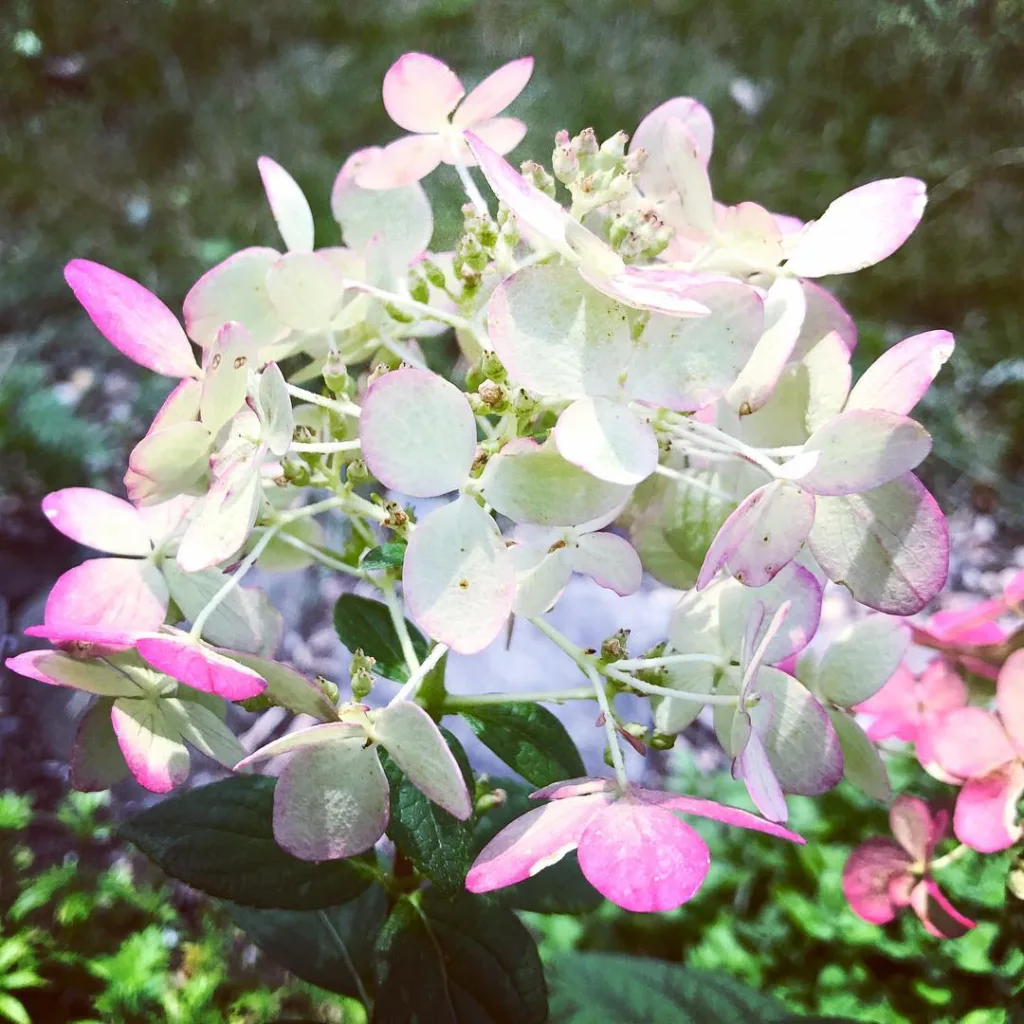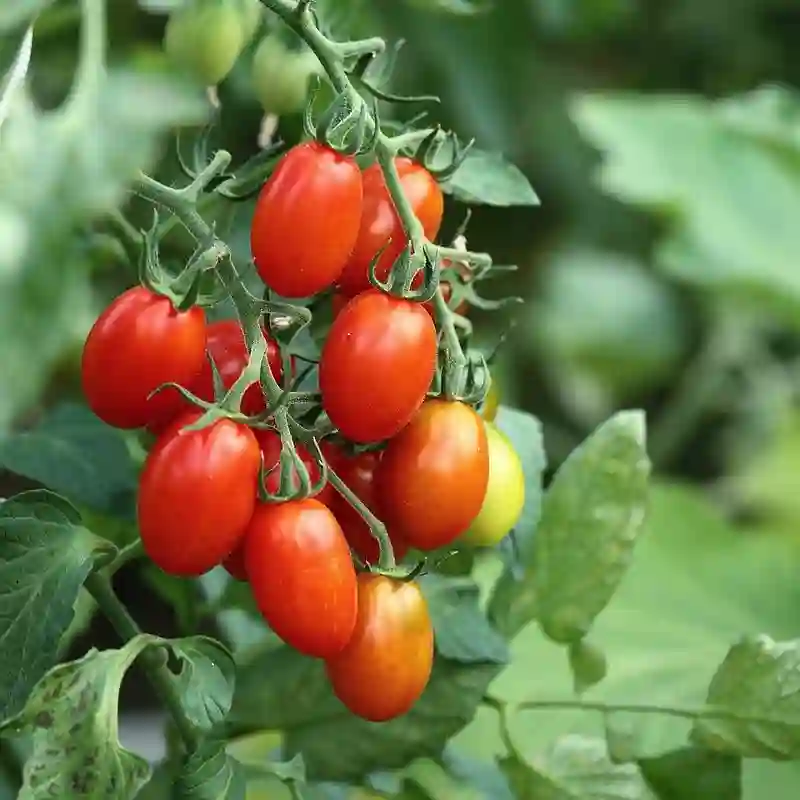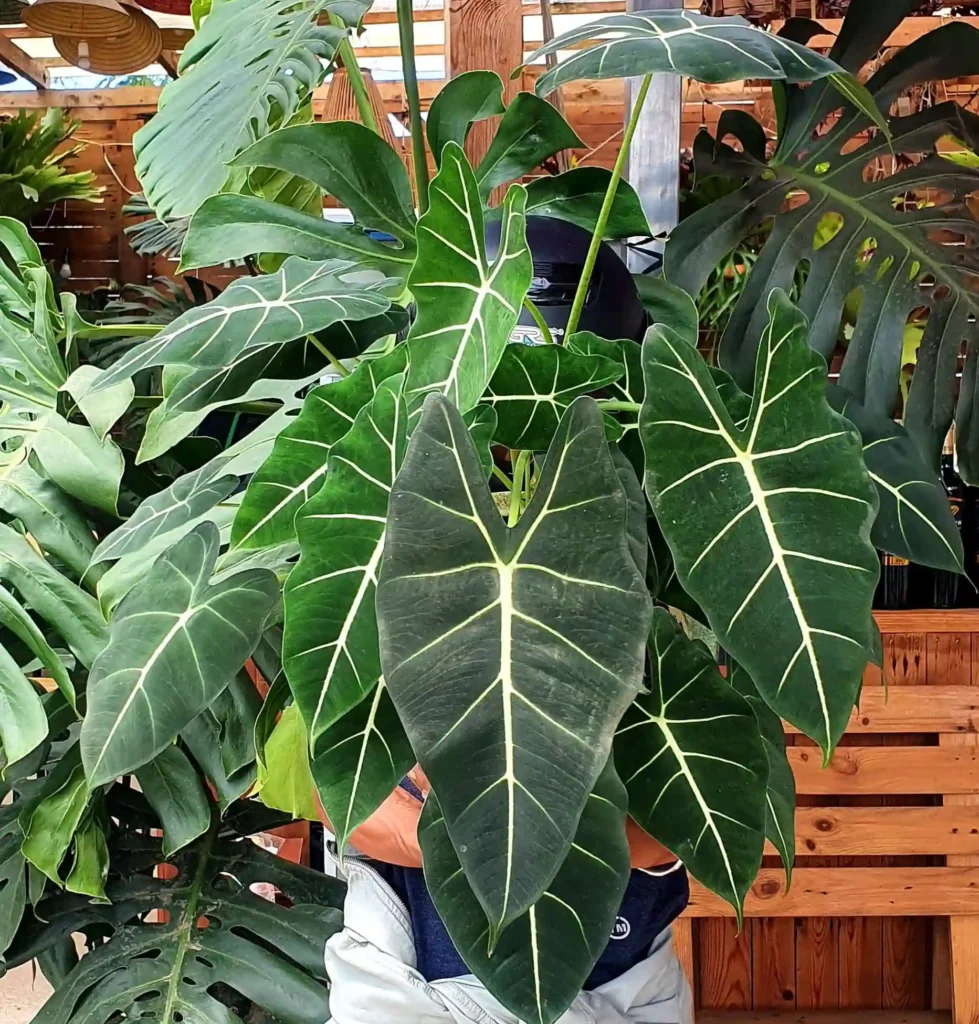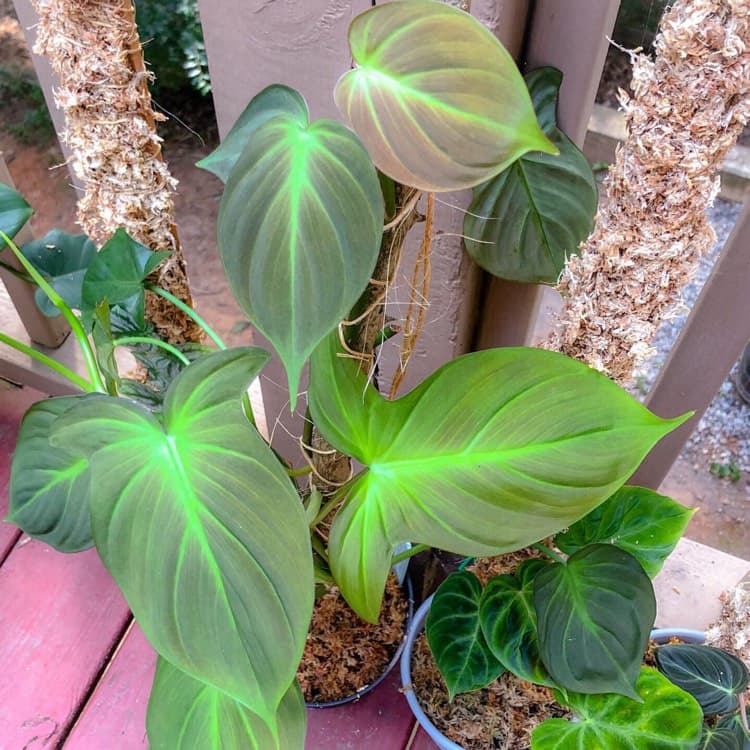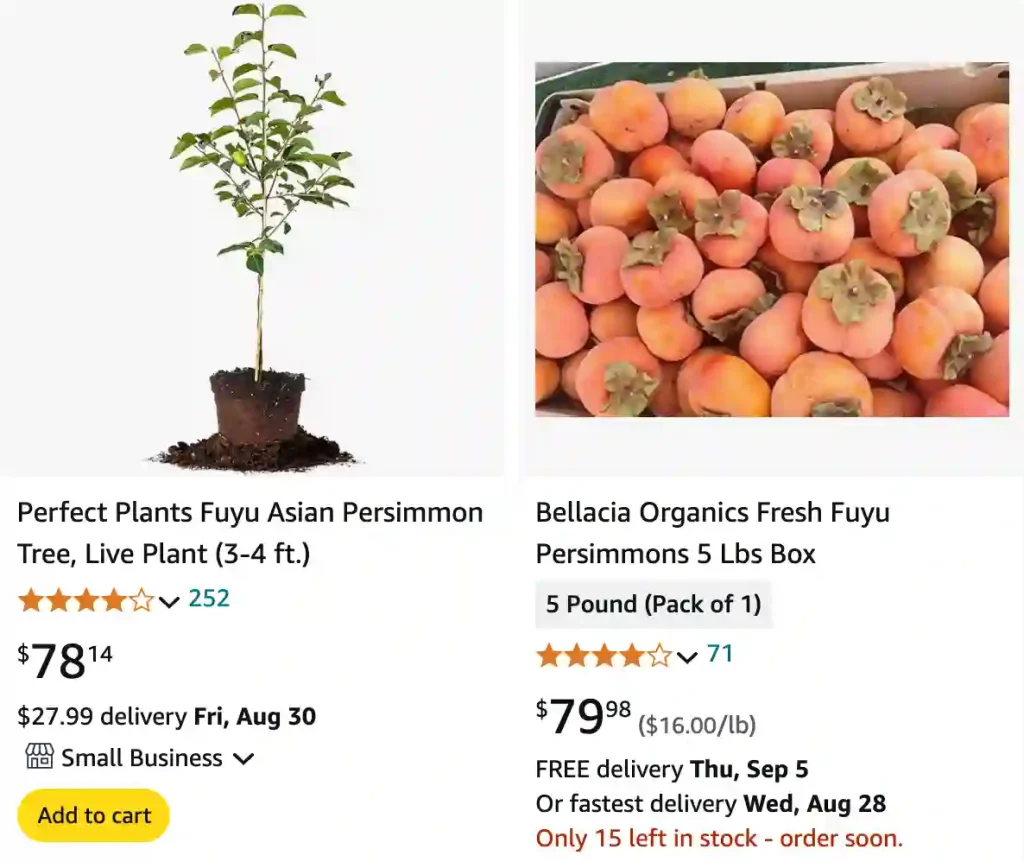
FAQs About Fuyu Persimmon
Fuyu Persimmons are one of my favorite fruits, and they are increasingly popular among fruit enthusiasts. If you’re new to this fruit, you might have some questions. Here are some common FAQs about Fuyu Persimmon to help you understand this delicious fruit better.
What is a Fuyu Persimmon?
Fuyu Persimmon, scientific know as Diospyros Kaki ‘Fuyu’, is a type of non-astringent persimmon that is native to East Asia but is now grown in various parts of the world, including the United States. Unlike astringent varieties, like the Hachiya Persimmon, Fuyu Persimmons can be eaten when they are firm. They have a sweet, crisp texture, similar to an apple, making them versatile for various culinary uses.
780 Species in Genus Diospyros
When is Fuyu Persimmon Ripe?
Fuyu Persimmons are typically ripe from late fall to early winter, around October to December. A ripe Fuyu Persimmon is orange and firm. Unlike Hachiya Persimmons, which need to be soft to eat, you can enjoy Fuyu Persimmons while they are still firm, though they will become sweeter and softer if left to ripen further.
How to Eat Fuyu Persimmon?
Eating a Fuyu Persimmon is straightforward. You can eat it like an apple, biting into it whole, or you can slice it up. There is no need to peel the skin, making it a convenient snack. Fuyu Persimmons can also be added to salads, smoothies, or desserts for a sweet, fruity flavor.
Can You Eat Fuyu Persimmon Skin?
Yes, you can eat the skin of a Fuyu Persimmon. The skin is thin and edible, similar to an apple’s skin. Some people prefer to peel it if they find it slightly tough, but it is entirely safe and nutritious to eat the skin.
How Many Calories in a Fuyu Persimmon?
A medium-sized Fuyu Persimmon contains about 70-80 calories. It is low in calories, making it a healthy snack option. In addition to being low in calories, Fuyu Persimmons are also rich in dietary fiber, vitamins A and C, and various antioxidants.
How to Cut a Fuyu Persimmon?
Cutting a Fuyu Persimmon is easy. First, wash the fruit thoroughly. Then, cut off the top with the stem. You can slice it into rounds, wedges, or any shape you prefer. There are no seeds to worry about, which makes it even easier to cut and eat.
What Does a Fuyu Persimmon Taste Like?
Fuyu Persimmons have a sweet, honey-like flavor with a slight hint of cinnamon. The texture is crisp and firm when unripe, similar to an apple, but becomes softer as it ripens. The taste is often described as a mix between a pear and a date, making it a delightful addition to various dishes.
Does Fuyu Persimmon Have Seeds?
Fuyu Persimmons typically do not have seeds, making them even easier to eat and prepare. However, occasionally, a Fuyu Persimmon might contain a few seeds, but they are usually small and easily removable.
How Big Do Fuyu Persimmon Trees Get?
Fuyu Persimmon trees can grow up to 15-20 feet tall and wide, making them a good choice for medium to large gardens. They have a spreading habit and produce beautiful orange fruit in the fall. Pruning can help manage the tree’s size and shape.
How to Plant Fuyu Persimmon Seeds?
To plant Fuyu Persimmon seeds, you first need to extract the seeds from the fruit, clean them, and then stratify them in the refrigerator for a few months. After stratification, plant the seeds in well-drained soil and keep them in a warm, sunny location. Seed-grown trees may take several years to bear fruit, so patience is key.
How to Prune Fuyu Persimmon Tree?
Pruning a Fuyu Persimmon tree is important for maintaining its health and fruit production. Prune the tree in late winter or early spring before new growth begins. Remove any dead or diseased branches, and thin out crowded areas to allow light and air to penetrate the canopy. This helps improve fruit quality and reduces the risk of disease.
Is Fuyu Persimmon Self-Pollinating?
Yes, Fuyu Persimmon trees are self-pollinating, meaning you only need one tree to produce fruit. However, planting more than one tree can increase fruit production through cross-pollination.
Fuyu Persimmon vs Hachiya
The main difference between Fuyu and Hachiya Persimmons is their texture and taste when unripe. Fuyu Persimmons can be eaten when they are firm, whereas Hachiya Persimmons must be very soft before they are palatable. Hachiya Persimmons are more astringent and can taste bitter if eaten before they are fully ripe.
Fuyu Persimmon vs Persimmon
When comparing Fuyu Persimmons to other types of persimmons, the Fuyu variety stands out due to its non-astringent nature. While other persimmons, like the Hachiya, need to be soft to be eaten without bitterness, Fuyu can be enjoyed both firm and soft. This makes Fuyu Persimmons more versatile and popular among those who prefer a crisper texture.
Where to Buy Fuyu Persimmon Tree Near Me?
You can find Fuyu Persimmon trees at local nurseries, garden centers, or even online. Some specialty fruit tree nurseries also carry Fuyu Persimmon trees. It’s best to call ahead to ensure availability. If buying online, look for reputable sellers with good reviews.
How to Care for Fuyu Persimmon Tree?
Caring for a Fuyu Persimmon tree involves providing full sun, well-drained soil, and regular watering. Mulching around the base of the tree helps retain moisture and keep weeds at bay. Fertilize in early spring to promote healthy growth and fruit production.
Is Fuyu Persimmon Toxic?
Fuyu Persimmons are not toxic to humans and are safe to eat. However, they should be consumed in moderation, especially if you have digestive issues, as the high fiber content can cause digestive discomfort if eaten in large quantities.
Benefits of Fuyu Persimmon
Fuyu Persimmons offer several health benefits. They are rich in vitamins A and C, dietary fiber, and antioxidants, which can help boost the immune system, improve digestion, and promote overall health. They are also low in calories, making them a healthy snack option.
By exploring these FAQs about Fuyu Persimmons, I hope you feel more confident in choosing, eating, and growing this delightful fruit. Whether you’re a seasoned gardener or a curious foodie, Fuyu Persimmons are a great addition to your diet and garden!
If i die, water my plants!
